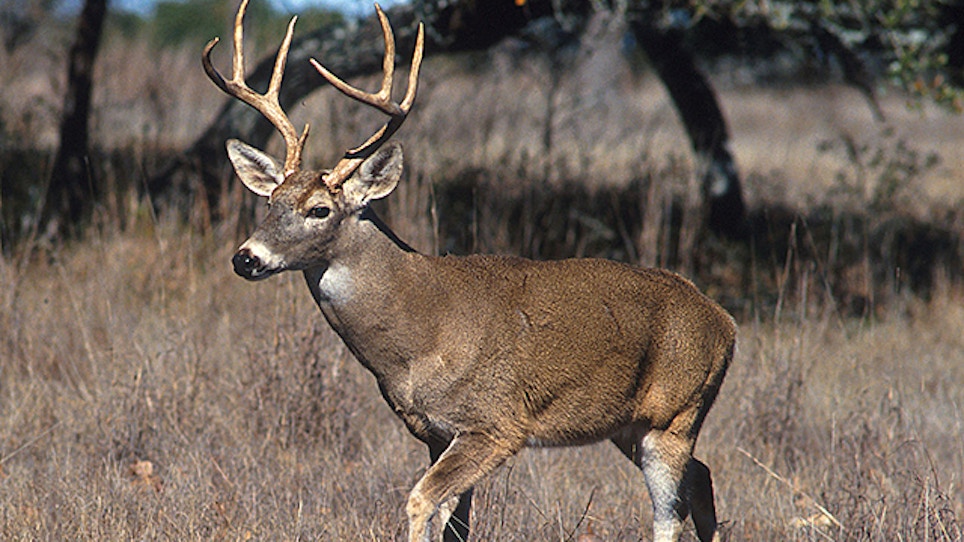What’s ailing deer and deer hunting in the United States?
At least 100 ideas came to mind as about 200 hunters, landowners, wildlife biologists and hunting-industry representatives tackled the question at the second North American Deer Summit. The meeting in downtown Louisville’s Galt Hotel was sponsored by the National Deer Alliance.
The first Deer Summit was held in March 2014 near Branson, Mo., to address growing concerns about whitetails and mule deer in North America. That meeting identified many of the same threats raised in Louisville, including shrinking habitat size, declining habitat quality, increasing predator numbers, chronic wasting disease, epizootic hemorrhagic disease, prolonged drought, and declining hunter numbers and license revenues.
Such challenges are complex and often complicated.
“A lot of this is death by 1,000 cuts, and all of those cuts seem intertwined,” said James Curcuruto, director of industry research and analysis for the National Shooting Sports Foundation, one of seven organizations and companies on the NDA’s Board of Directors. “It’s up to us to try to stop the bleeding.”
The Summit entailed two full days of work over a three-day period, with nearly half the time devoted to identifying and targeting issues for the NDA to tackle. When the assemblage finished its work, one thing was clear: The troubles plaguing deer and deer hunting in the United States are plaguing hunting itself. Whether it’s fewer hunters, access to land, or poor public perceptions of hunting, their impacts on deer hunting are obvious.
“About 90 percent of bowhunters also shoot guns, and most hunters hunt deer,” said Jay McAninch, former CEO/president of the Archery Trade Association, and newly elected chairman of the NDA Board of Directors. “Whether it’s Ducks Unlimited, Pheasants Forever, Ruffed Grouse Society, National Wild Turkey Federation or Rocky Mountain Elk Foundation, many of their members hunt deer. But deer are not managed nationally; they’re managed on a statewide basis. The NDA needs to work with states on behalf of all deer hunters.”
Summit attendees identified five main trouble spots in deer hunting, and roughly 20 strategies to address each of them. They ranked those five key categories as follows:
— Hunter recruitment and retention.
— Political influences on hunting.
— Landscape change and habitat loss.
— Public perceptions about hunting/hunters.
— The captive deer industry.
As the NDA begins tackling these issues, it will need to decide which ones require the most immediate and focused attention. Several speakers identified political influences and captive-deer issues, including CWD, as especially volatile issues.
“Ninety percent of our guys realize politicians make bad deer-management policy,” said Craig Dougherty, the NDA’s executive director. “That’s why we need the NDA. We need to be involved in that decision-making.”
Wildlife biologist Gary Alt, who once ran Pennsylvania’s deer program, also warned that political decisions can hamper agencies’ abilities to tackle problems like CWD. Alt worries about the long-term impacts of the disease on deer hunting.
“We can’t keep ignoring CWD,” Alt said. “I believe it will spread throughout the whitetail’s range in a couple-hundred years. Will deer still be on the landscape when that happens? And what happens between now and then? The jury’s still out. We shouldn't assume anything about CWD’s long-term impacts on the species.”
For those reasons and others, Curcuruto encouraged participants to join the NDA, participate in its work, and encourage their friends to join.
“Think about the 1980s while you consider getting involved,” he said. “Whitetails Unlimited formed in 1982. Pheasants Forever, Rocky Mountain Elk Foundation, and the National Wild Turkey Foundation formed in 1984. In 1988 it was QDMA. The NDA is the first wildlife-based conservation group to form since the 1980s. This is your chance to get in on the ground floor of a great organization. This could be the last time you get involved in something so worthwhile.”
Brian Murphy, CEO and president of the QDMA, echoed those thoughts.
“Deer hunters have to get involved, get engaged, and care enough to tackle these issues, but I’m betting on them,” he said. “If not, we’ll look back someday and be very, very disappointed in the legacy we left for future generations.”
(This story originally was published in 2016.)






